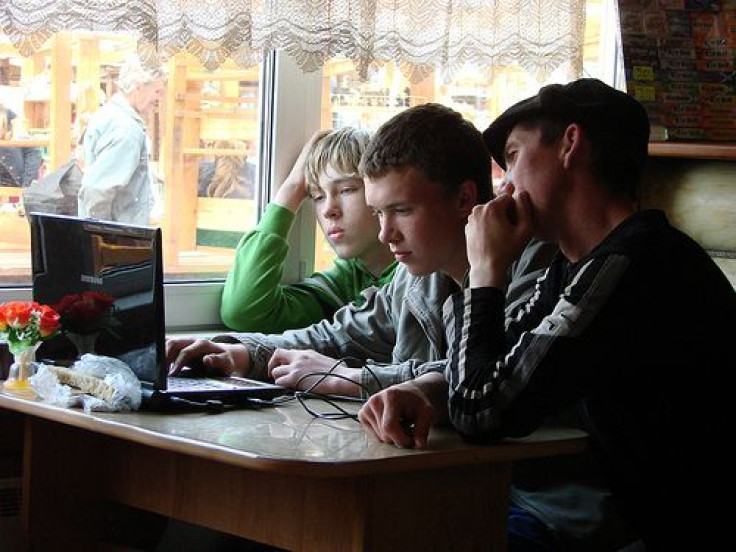Boys With Autism May Suffer Sleep Issues From Bedroom TVs: What Screen-Based Activity Amounts To Less Sleep?

Getting a sufficient amount of sleep is essential for maintaining good physical and mental health for all individuals, especially kids. They have instant access to TV, smartphones, computers, and tablets whether they’re at school or at home which can become a pressing issue for parents who want to limit screen-time. Media exposure in the bedroom is generally associated with less time spent sleeping in the general population. Boys with autism spectrum disorder (ASD) may be more vulnerable to suffering from sleep issues brought on by screen-based media than those with ADHD or typically developing (TD) boys, according to a recent study.
The Centers for Disease Control and Prevention reports that about one in 88 children have been identified with ASD in the U.S. This condition is defined by the social and communication difficulties as well as repetitive behaviors patients face. Of those children who have ASD, 80 percent generally express sleep problems, such as falling asleep and waking up in the middle of the night. ASD patients who suffer from poor sleep generally display more problematic behavior. While neurological, behavioral, and medical issues may be potential reasons for poor sleep in ASD patients, bedroom access to screen-based media may be a particularly important factor to consider when assessing their sleeping patterns.
A team of researchers from the University of Missouri examined the relationships between bedroom media access, average media exposure, and average time spent sleeping among boys with ASD compared to those with attention deficit hyperactivity disorder (ADHD) or typical development (TD). The participants, ages 8 to 17, were divided into three groups: 49 boys with ASD, 38 with ADHD, and 41 TD boys.
The parents of the boys with ASD, ADHD, or TD were asked about their child’s screen-based media use, specifically the average number of hours they spent watching TV or playing videogames on weekdays and weekends. The parents were also asked how many hours their children slept each night.
Throughout all three groups, access to media was associated with less time spent sleeping each night. Boys who had a television in their room spent an average of 8.3 hours sleeping per night, compared to nine hours for boys without a television in their bedroom. The participants with a computer in their room got 7.9 hours of sleep per night, compared to 8.7 hours for boys who did not have a computer. Lastly, boys with an in-room video game system averaged 8.3 hours of sleep, compared to 8.8 hours for boys without a video game system in their rooms.
Bedroom access to a computer or television was strongly correlated to less sleep among boys with ASD when compared to the other two groups, according to a news release. Addtionally, playing video games accounted for the most in-bedroom media use that affected sleep among boys with ASD.
The findings remained unaffected even when the researchers accounted for other factors, such as age, ethnicity, number of siblings, parents’ marital status, household income, and medications the child was taking.
“Even though our findings are preliminary, parents should be aware that media use may have an effect on sleep, especially for children with autism,” Christopher Engelhardt, a post-doctoral research fellow at the MU Thompson Center for Autism and Developmental Disorders, said in the news release.
The researchers emphasize that future scientific studies should examine the link between bedroom media access and sleep among this particular group in order to determine if sleep issues can be resolved through careful media monitoring.
The findings "suggest that in-room access to screen-based media and time spent playing video games may place individuals with autistic spectrum disorders at increased risk for sleep problems," wrote the researchers.
In a nationally, representative survey from Common Sense Media — a the nonprofit advocacy group — 72 percent of kids who were 8 or under reported using a mobile device for some type of media activity such as playing games, watching videos, or using apps. Their media use increased 38 percent from two years ago, while 17 percent of the children reported using a mobile device every day. Kids engaged more in mobile media use than in any other type of entertainment. Increased media use among younger age groups means that parents should be more aware, and learn how to manage their kids’ use appropriately.
The American Academy of Pediatrics (AAP) suggests that children and teens engage in entertainment media for no more than one or two hours per day — granted it is high-quality content. Television and other entertainment media is not advised for infants and children under age 2 because a child’s brain develops rapidly during these years and they learn best by interacting with people, not screens, the AAP says.
For tips on how you can monitor your child’s media habits, click here.
Source: Engelhardt CR, Mazurek MO, and Sohl K. Media Use and Sleep Among Boys With Autism Spectrum Disorder, ADHD, or Typical Development. Pediatrics. 2013.



























